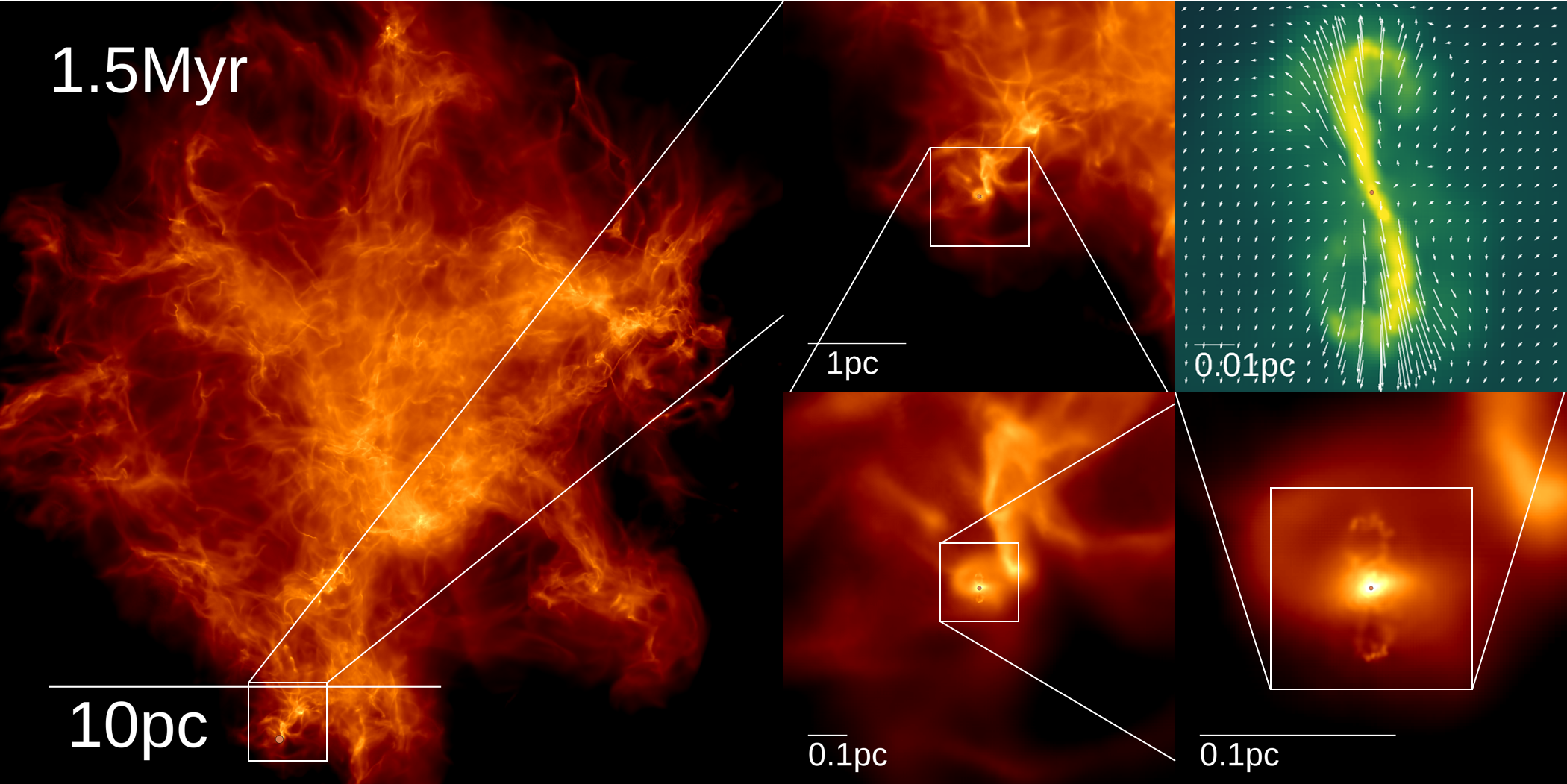
The effects of protostellar outflows on the IMF
Stars are the fundamental units of astrophysics and their formation is a key process that influences the evolution of galaxies, planets, and the development of life. Understanding how stars form is crucial even for seemingly unconnected fields of astronomy, as the interpretation of observed starlight from galaxies (even as a background) and other unresolved sources relies on (among others) an assumed initial mass function (IMF) of stars. The initial mass function of stars describes the mass distribution of newly born stars (i.e. how common are giant or dwarf stars). Despite its importance and decades of active research, it is still unclear what physical mechanisms determine it. In this work we present the first simulations of the STARFORGE project; these follow the formation of individual stars in giant molecular clouds (GMCs) using the GIZMO code.
We have run a suite of simulations with increasingly complex physics: starting with a magnetized and turbulent fuid at constant temperature that collapses under its gravity (the minimum physics to model star formation). The next step is allowing the temperature of the fluid to vary, which becomes significant in the dense regions of collapsing clouds, where stars form. Finally, we allow the newly formed stars to influence their surroundings, by launching high velocity jets along their poles. We show that without these jets stellar masses are an order of magnitude higher than observed. Enabling them, however, reduces stellar masses, not only because some of the star's material is ejected, but also because these high velocity jets dirupt the flow in a large region around the star, preventing the neighboring gas from falling onto the star and allowing it to form new stars instead. The result is an IMF quite similar to that observed in the Solar neighborhood.
While we find that jets are crucial in determining the masses of stars, they are unable to regulate star formation. This means two things: (1) that in these simulations massive stars grow without limit to masses many hundreds of time larger than the Sun (while the most massive observed stars are only about a hundred times as massive); and that (2) clouds turn an almost all of their masses into stars, while observed clouds disperse after turning only a few percent. Furthermore, the characteristic mass of stars set by jets is strongly dependent on the strength of the jets (which is poorly constrained by observations) as well the the temperature of the parent cloud, which predicts slightly larger IMF variations than observed. This means that even though jets play a crucial part in setting the IMF, additional physics are necessary to reproduce the observed IMF and truly understand star formation.